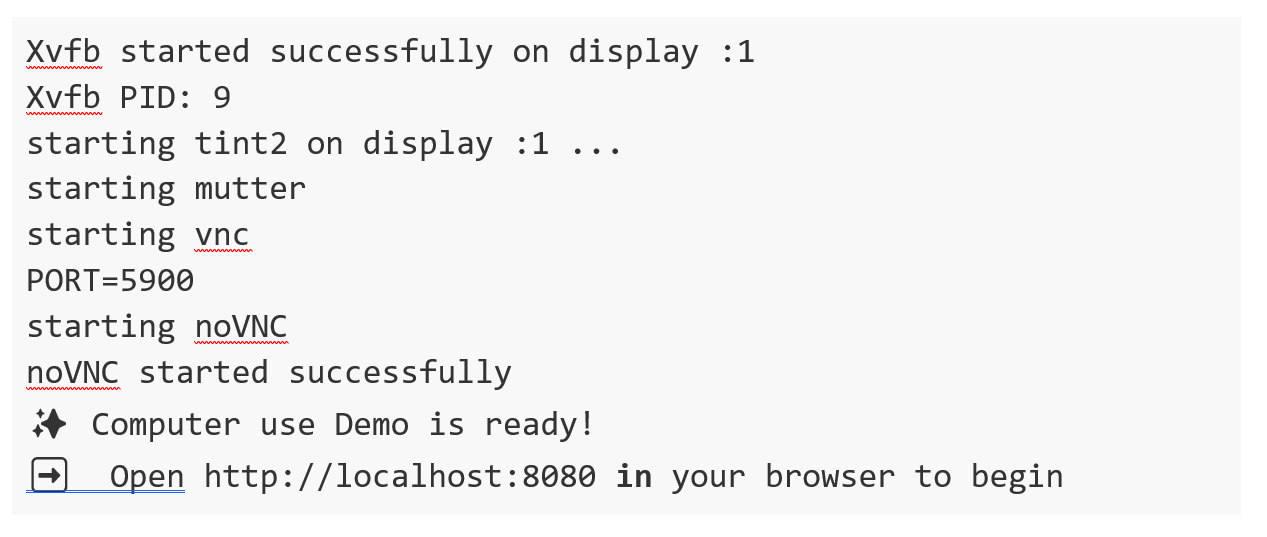
The evolution of generative AI has been dizzying: from the first great language models that impressed us with their ability to reproduce human reading and writing, through the advanced RAG (Retrieval-Augmented Generation) techniques that quantitatively improved the quality of the responses provided and the emergence of intelligent agents, to an innovation that redefines our relationship with technology: Computer use.
At the end of April 2020, just one month after the start of an unprecedented period of worldwide home confinement due to the SAR-Covid19 global pandemic, we spread from datos.gob.es the large GPT-2 and GPT-3 language models. OpenAI, founded in 2015, had presented almost a year earlier (February 2019) a new language model that was able to generate written text virtually indistinguishable from that created by a human. GPT-2 had been trained on a corpus (set of texts prepared to train language models) of about 40 GB (Gigabytes) in size (about 8 million web pages), while the latest family of models based on GPT-4 is estimated to have been trained on TB (Terabyte) sized corpora; a thousand times more.
In this context, it is important to talk about two concepts:
- LLLMs (Large Language Models ): are large-scale language models, trained on vast amounts of data and capable of performing a wide range of linguistic tasks. Today, we have countless tools based on these LLMs that, by field of expertise, are able to generate programming code, ultra-realistic images and videos, and solve complex mathematical problems. All major companies and organisations in the digital-technology sector have embarked on integrating these tools into their different software and hardware products, developing use cases that solve or optimise specific tasks and activities that previously required a high degree of human intervention.
- Agents: The user experience with artificial intelligence models is becoming more and more complete, so that we can ask our interface not only to answer our questions, but also to perform complex tasks that require integration with other IT tools. For example, we not only ask a chatbot for information on the best restaurants in the area, but we also ask them to search for table availability for specific dates and make a reservation for us. This extended user experience is what artificial intelligence agentsprovide us with. Based on the large language models, these agents are able to interact with the outside world (to the model) and "talk" to other services via APIs and programming interfaces prepared for this purpose.
Computer use
However, the ability of agents to perform actions autonomously depends on two key elements: on the one hand, their concrete programming - the functionality that has been programmed or configured for them; on the other hand, the need for all other programmes to be ready to "talk" to these agents. That is, their programming interfaces must be ready to receive instructions from these agents. For example, the restaurant reservation application has to be prepared, not only to receive forms filled in by a human, but also requests made by an agent that has been previously invoked by a human using natural language. This fact imposes a limitation on the set of activities and/or tasks that we can automate from a conversational interface. In other words, the conversational interface can provide us with almost infinite answers to the questions we ask it, but it is severely limited in its ability to interact with the outside world due to the lack of preparation of the rest of computer applications.
This is where Computer use comes in. With the arrival of the Claude 3.5 Sonnet model, Anthropic has introduced Computer use, a beta capability that allows AI to interact directly with graphical user interfaces.
How does Computer use work?
Claude can move your computer cursor as if it were you, click buttons and type text, emulating the way humans operate a computer. The best way to understand how Computer use works in practice is to see it in action. Here is a link directly to the YouTube channel of the specific Computer use section.

Figure 1. Screenshot from Anthropic's YouTube channel, Computer use specific section.
Would you like to try it?
If you've made it this far, you can't miss out without trying it with your own hands.
Here is a simple guide to testing Computer use in an isolated environment. It is important to take into account the security recommendations that Antrophic proposes in its Computer use guidelines. This feature of the Claude Sonet model can perform actions on a computer and this can be potentially dangerous, so it is recommended to carefully review the security warning of Computer use.
All official developer documentation can be found in the antrophic's official Github repository. In this post, we have chosen to run Computer use in a Docker container environment. It is the easiest and safest way to test it. If you don't already have it, you can follow the simple official guidelines to pre-install it on your system.
To reproduce this test we propose to follow this script step by step:.
- Anthropic API Key. To interact with Claude Sonet you need an Anthropic account which you can create for free here. Once inside, you can go to the API Keys section and create a new one for your test
- Once you have your API Key, you must run this command in your terminal, substituting your key where it says "%your_api_key%":

3. If everything went well, you will see these messages in your terminal and now you just have to open your browser and type this url in the navigation bar: htttp://localhost:8080/.

You will see your interface open:

Figure 2. Computer use interface.
You can now go to explore how Computer use works. We suggest the following prompt to get you started:
We suggest you start small. For example, ask them to open a browser and search for something. You can also ask him to give you information about your computer or operating system. Gradually, you can ask for more complex tasks. We have tested this prompt and after several trials we have managed to get Computer use to perform the complete task.
Open a browser, navigate to the datos.gob.es catalogue, use the search engine to locate a dataset on: Public security. Traffic accidents. 2014; Locate the file in csv format; download and open it with free Office.
Potential uses in data platforms such as datos.gob.es
In view of this first experimental version of Computer use, it seems that the potential of the tool is very high. We can imagine how many more things we can do thanks to this tool. Here are some ideas:
- We could ask the system to perform a complete search of datasets related to a specific topic and summarise the main results in a document. In this way, if for example we write an article on traffic data in Spain, we could unattended obtain a list of the main open datasets of traffic data in Spain in the datos.gob.es catalogue.
- In the same way, we could request a summary in the same way, but in this case, not of dataset, but of platform items.
- A slightly more sophisticated example would be to ask Claude, through the conversational interface of Computer use, to make a series of calls to the data API.gob.es to obtain information from certain datasets programmatically. To do this, we open a browser and log into an application such as Postman (remember at this point that Computer use is in experimental mode and does not allow us to enter sensitive data such as user credentials on web pages). We can then ask you to search for information about the datos.gob.es API and execute an http call, taking advantage of the fact that this API does not require authentication.
Through these simple examples, we hope that we have introduced you to a new application of generative AI and that you have understood the paradigm shift that this new capability represents. If the machine is able to emulate the use of a computer as we humans do, unimaginable new opportunities will open up in the coming months.
Content prepared by Alejandro Alija, expert in Digital Transformation and Innovation. The contents and points of view reflected in this publication are the sole responsibility of the author.


